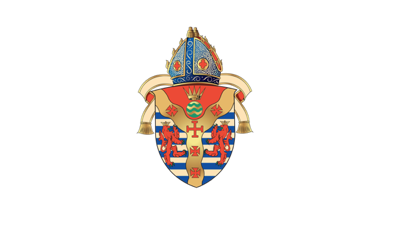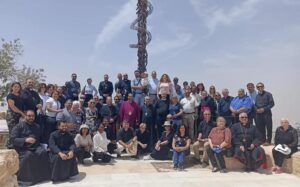The month of August has seen the centenary of the birth of English poet Philip Larkin. To mark the occasion the BBC have been offering daily readings of his poems for the last couple of weeks. My own favourite Larkin poem was not one that they chose to use. It is called “Church Going” (easily accessed on the internet) and it describes the author, an atheist and unfamiliar with church congregations, visiting a country church and wondering what it’s for and whether it has any value for society nowadays. Almost despite himself he concludes in a famous quote that the church is “a serious house on serious earth.” That is a wonderfully concise way that we might recognize, of saying that church is not superficial or casual or an occasional accompaniment to life, but rather, even to objective view, a place to acknowledge the serious issues of life and death; to celebrate its joys and peruse and articulate its sorrows. And as those who are church-goers also recognize, it is a place to explore in liturgy the great mysteries of human existence and indeed to discover (or have revealed) something more about what it means to be human. A serious house on serious earth.
One of the Gospel readings set for Sundays in August presents us with two different interpretations of what it means to be a serious church. Luke 13 vv10-17, which should actually extend to verse 20, begins by describing what looks like one more regular healing. Actually, it’s rather more than that. Only Luke records this incident in his Gospel, and he places it carefully in his narrative. The Gospel has already ‘dealt with’ Jesus as a healer in chapters 7 and 8 and the emphasis here is not so much on the healing as on the conversation that results from it. Again, we might assume that the Sabbath is the main issue at stake. But it is not. What we see in the conversation between the ruler of the synagogue and Jesus is nothing less than a clash between different ideas of what makes religion serious.
The ruler of the synagogue believes that the role of religion, or in our terms the role of the church, is to set rules and stick to them no matter what. Hence it is not appropriate to heal someone on the Sabbath day. Jesus believes that nothing could be more appropriate than to heal on the Sabbath. The synagogue ruler believes in the religious community as first and foremost, an institution, and he has many followers in today’s churches.
The dangers in an institutional understanding of church are threefold. An institutional church builds a structure of power based on hierarchies. It can easily become more interested in power and control than its core message. It almost inevitably creates hypocrites as the gap between rule makers and enforcers on the one hand, and subjects on the other, becomes ever wider. All the Gospel writers rail against this understanding of religion and conveniently locate the problem in Judaism. However, it is clearly a problem for the nascent Christian community as well. Clearly there needs to be some structure and organisation to support and enable, but at roughly the same time that Luke was writing, the Pastoral Epistles (Timothy and Titus) were beginning to describe the church in objective organisational terms far removed from the vision of Paul. He coined the idea of the church as an organism, a body, not an organisation. The Gospel writers want to say that this institutional view is even further removed from the teaching of Jesus.
Second, the story illustrates how leaders who take this path are robbed of their own humanity, as well as denying others. The rules are more important than the people, and those enforcing them become dehumanized. We are familiar with this phenomenon in concentration camp guards, but it is equally evident in those who deny mercy on the grounds that it’s the wrong day. And third, churches that follow this path soon become embroiled in irrelevant detail. It’s the kind of detail that administrators thrive on, but which can easily become confused with what discipleship demands. Throughout the ages some churches have had incredibly complex rules about food and what can be eaten when, for example; others about clothing and what dress or even hairstyle is appropriate.
Jesus’s response is also threefold. The dominant theme of the passage as he sets it out is actually release, and since the Sabbath is the prime symbol of release it is an appropriate time to do what religion actually demands. Release is a basic Christian axiom. The people of Israel first knew God as one who released people from slavery. The language of redemption, which derives from that, is ubiquitous in the Bible. We might think nowadays of all that we need to be released from – apart from those who are actually in captivity unjustly. We might think of release from the guilt that derives from sin, the release from suffering, release from anxiety and release from repression to name but a few. Luke uses a very unusual Greek word (endoxos) to link this passage with Exodus 34 verse 10, which sets out the positive and expansive vision of the original covenant between God and the people.
Second the passage widens the discussion by comparing this woman and her release to the difference between the kingdom of God and the kingdom of Satan. It is notable that the passage is followed immediately by two short parables about the kingdom. And third, those parables are the ones familiar from Matthew which encourage congregations to see that great things can grow from small beginnings. Curing a random old woman from a crippling disease is a sign of God’s presence and a sign that the kingdom really is present.
True seriousness is concerned with huge issues made flesh in small acts of mercy such as this. The Christian religious community is not to ape industrial corporations or local government bureaucracies. It is rather to practise servant leadership and to recall always the new covenant which authenticates it. A serious house on serious earth indeed.
John Holdsworth, Canon Theologian


